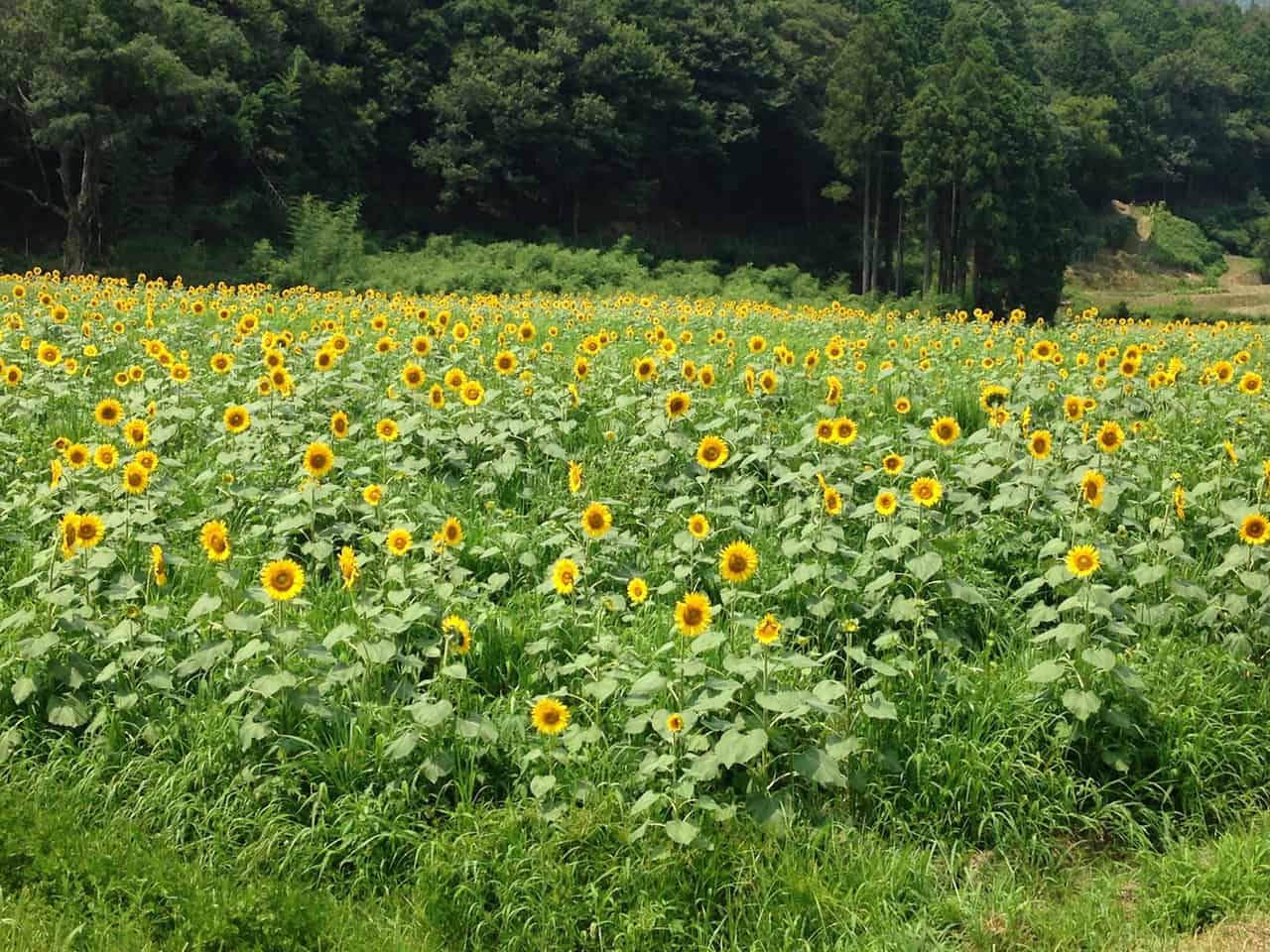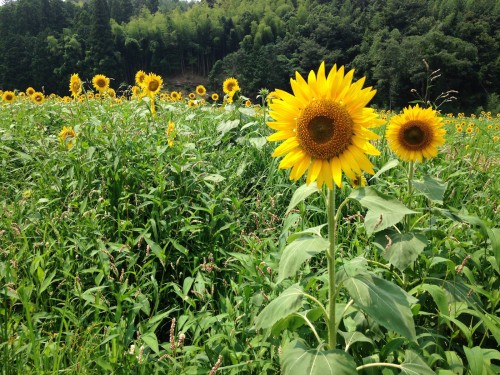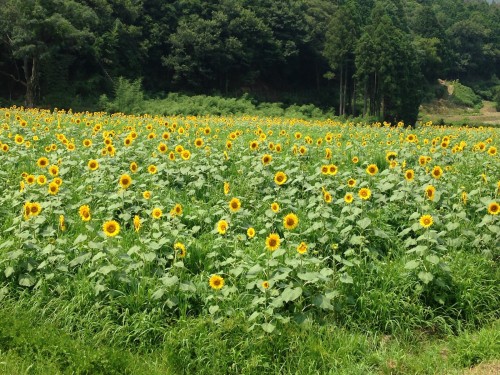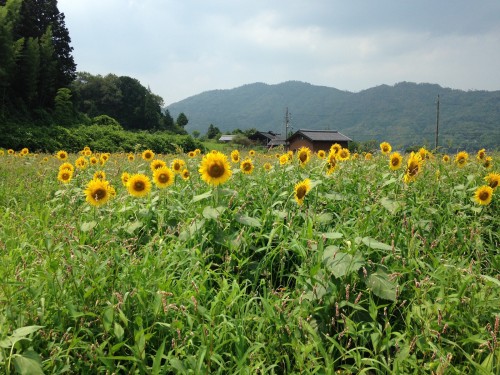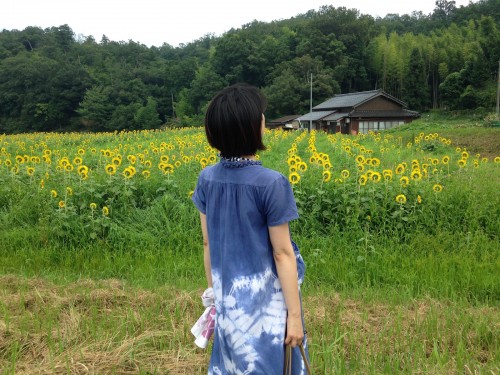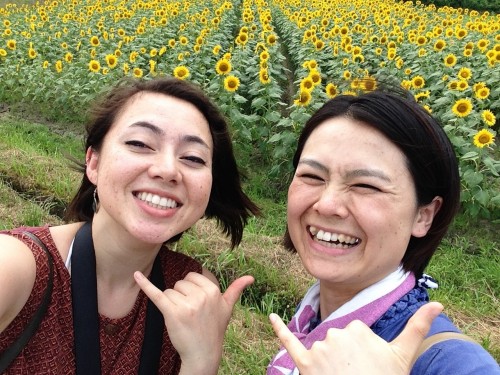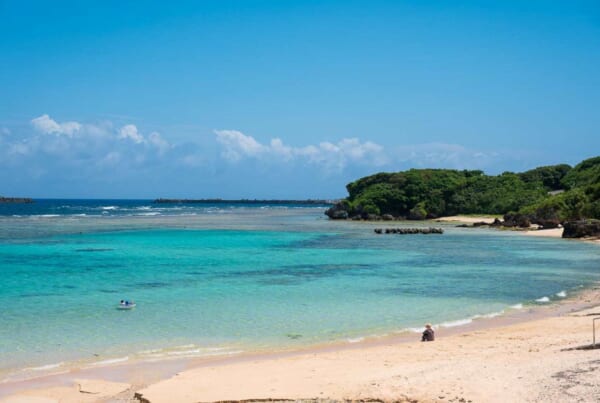Northern Kyoto is home to Tango, a region near the Sea of Japan which is said to have once been the “front” of Japan because of its shipping industry and prosperous exchanges with the Korean Peninsula. I had the pleasure of living in a small town in this region for a whole year when I was teaching English through the JET programme, and I cannot emphasize enough how beautiful and underrated the Tango area is.
In 2006, three Tango villages (Kaya, Iwataki, and Nodagawa) merged together to become Yosano, a beautiful valley town that spreads from the mythical Oeyama mountain range through the green fields of the Nodagawa River basin all the way up to the famous views of Amanohashidate. Yosano only has a population of 25,000 people and is not considered a famous among Japan’s urban residents—but in the summer it is home to one of the most beautiful Himawari sites in the entirety of Kyoto Prefecture.
What is Himawari?
Himawari is the Japanese word for sunflower. If the cherry blossom is representative of Japanese springtime, then the sunflower is definitely the flower that represents the Japanese summer. Summer in Yosano brings seemingly endless fields of these beautiful sunflowers.
I was lucky enough to visit Yosano’s glorious fields of sunflowers with my friend last summer towards the beginning of our roadtrip up to the seaside of Kyo-Tango. We had a lovely time just viewing the endless Himawari, taking photos and enjoying people-watching the many couples on dates and families with young children who were taking in the sights.
In English, Himawari 向日葵 translates to “flowers that turns towards the sun.” When we visited, my friend Megumi and I were pleasantly surprised to see that all the sunflowers were facing one direction without fail—a pretty cute sight to see from behind. After a bit of googling, we discovered that fully-bloomed sunflowers generally face east to greet the sun in the morning. Apparently before they mature fully, the flowers turn to face the sun as it moves across the sky during the day.
We also learned that sunflowers have recently become a symbol of hope and recovery for Japan. Ever since the tragic Fukushima disaster in 2011, sunflowers have been planted all over Fukushima because the are known to soak up radioactive toxins in the soil and help speed up the recovery process.
Many people from the Kansai area head to the Tango region during the summer to catch some sun on the Sea of Japan. If you are lucky enough to be in the area, don’t hesitate to check out Yosano’s amazing Himawari Batake (Sunflower Fields). That being said, I’m sure that even if you’re just passing through the area, it’ll be difficult to miss those vast golden fields.
[cft format=0]

